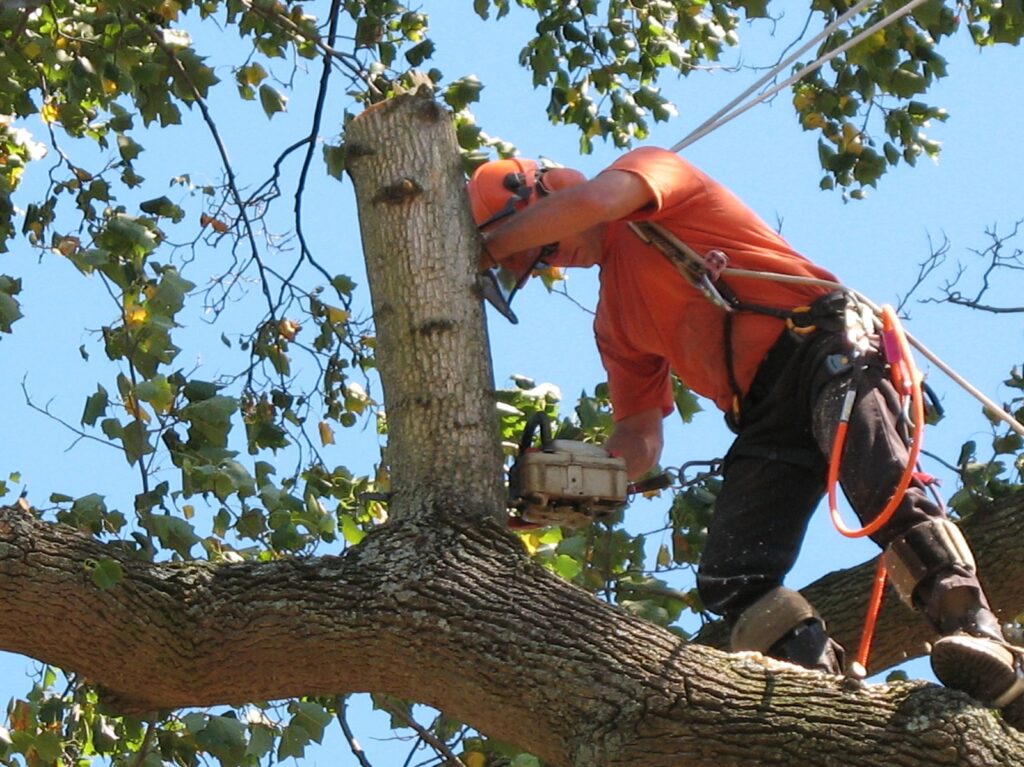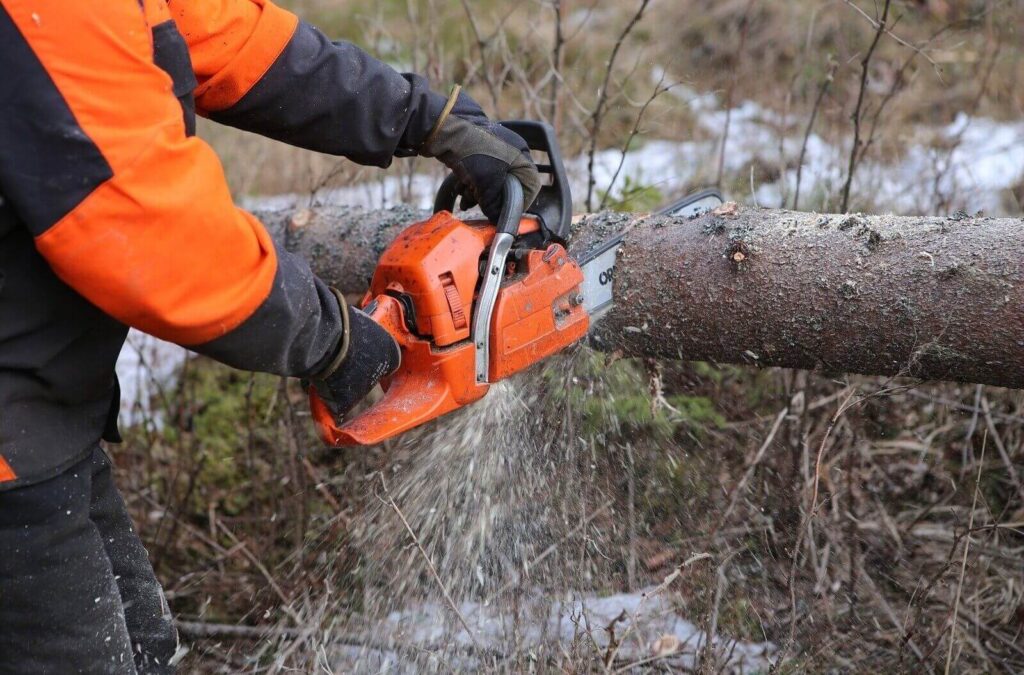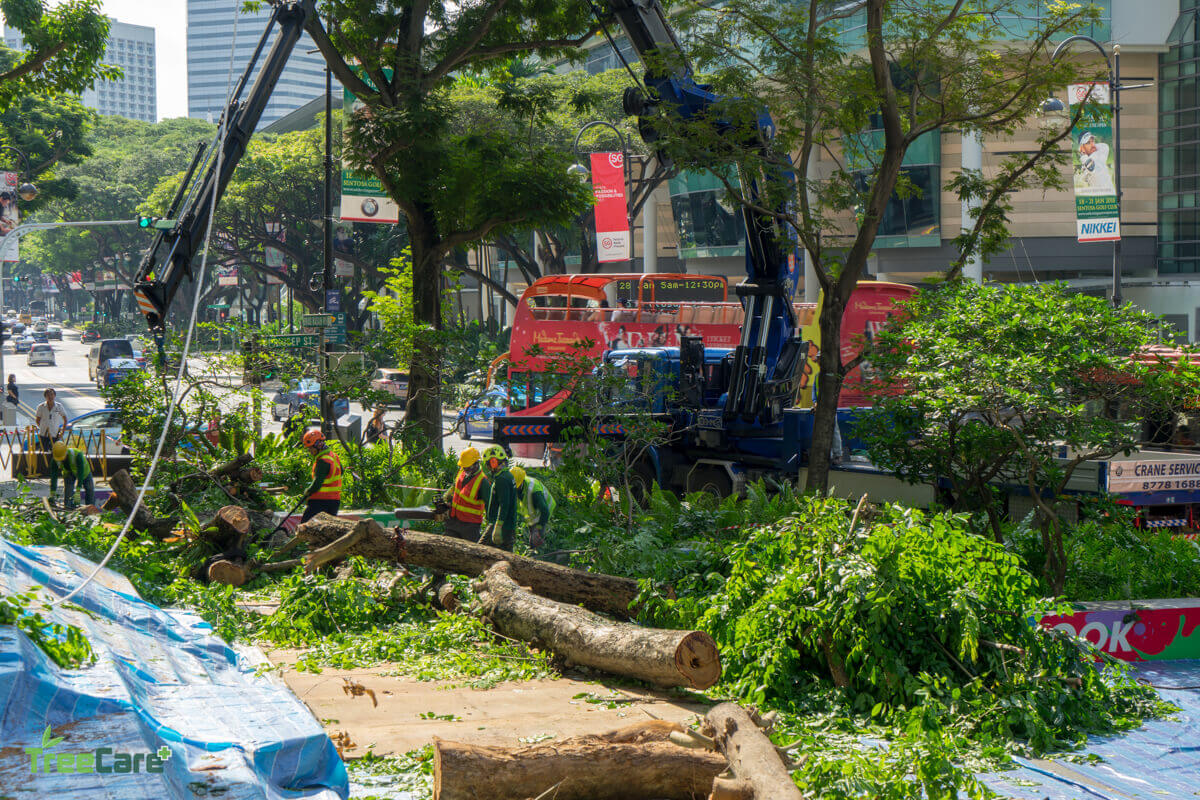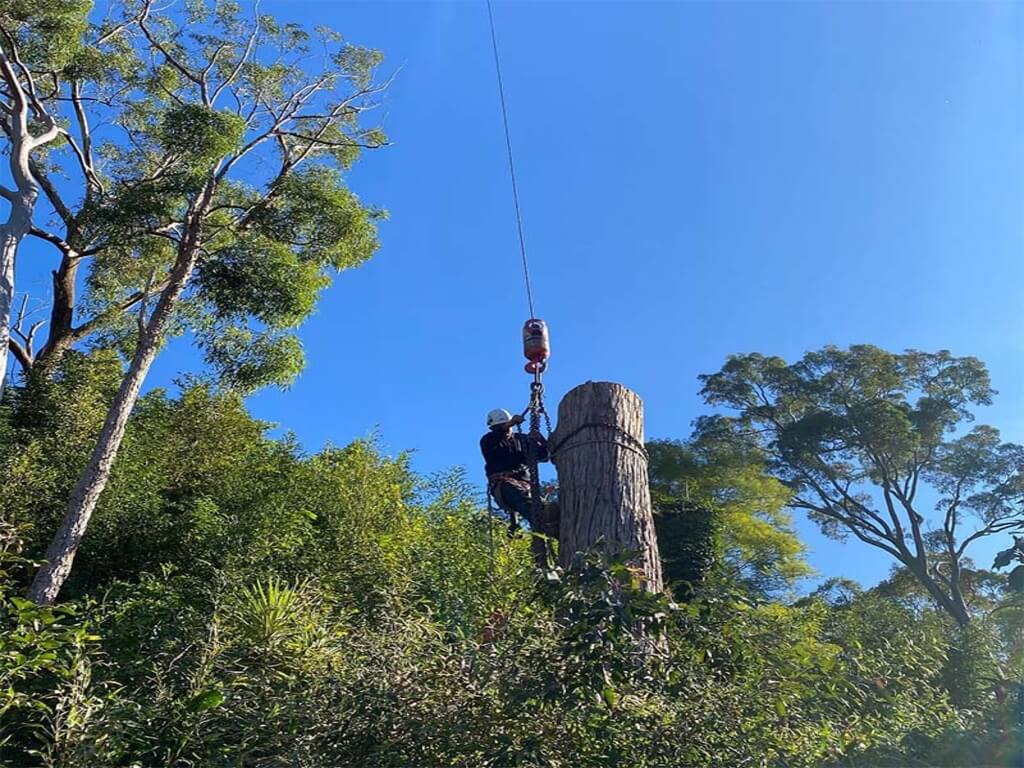The Ultimate Guide to Tree Pruning: Expert Tips for a Healthier Landscape
Trees are an essential part of our landscapes, providing shade, beauty, and even a home for wildlife. However, like any living organism, trees require care to stay healthy and vibrant. One important aspect of tree care is pruning. Pruning involves the selective removal of branches and limbs to maintain the tree’s structural integrity and promote healthy growth. In this ultimate guide, we will explore the fundamentals of tree pruning and provide expert tips to help you achieve a healthier landscape.
Understanding the Basics of Tree Pruning
Before delving into the specific techniques and tools used in tree pruning, it’s crucial to understand why pruning is essential for tree health.
Why Pruning is Essential for Tree Health
Pruning plays a vital role in ensuring the health and vitality of trees. By removing dead, diseased, or damaged branches, pruning helps prevent the spread of diseases and pests, allowing the tree to allocate resources more efficiently. Additionally, pruning promotes proper airflow and light penetration throughout the tree’s canopy, reducing the risk of fungal infections and promoting overall growth.
Pruning also helps shape the tree, ensuring it grows in a desirable manner. By selectively removing branches, the tree can be trained to have a strong structure and an aesthetically pleasing form. This is particularly important for trees that are planted in urban areas, where space constraints may require careful pruning to prevent interference with buildings, power lines, or other structures.
The Science Behind Tree Pruning
Tree pruning is not a random act but a carefully planned process guided by scientific principles. Understanding how trees respond to pruning is crucial in achieving the desired results. Pruning cuts influence the tree’s growth and shape, and understanding how trees respond to different cuts is essential for effective pruning.

When a branch is pruned, the tree responds by initiating a series of physiological and biochemical processes. The tree allocates resources to heal the wound and seal it off, preventing the entry of pathogens. It also redirects resources to other parts of the tree, promoting growth and development. By understanding these responses, arborists can make informed decisions about where and how to prune, maximizing the benefits for the tree.
Different Types of Trees and Their Pruning Needs
Each tree species has unique growth habits and requirements. Some trees grow upright, while others have spreading or weeping branches. Understanding the specific needs of different types of trees is vital for successful pruning. Certain trees, such as fruit-bearing trees, require annual pruning to maximize fruit production, while others may need less frequent maintenance.
For example, deciduous trees, which shed their leaves in the fall, are often pruned during their dormant season. This allows for better visibility of the tree’s structure and reduces the risk of disease transmission. Evergreen trees, on the other hand, can be pruned throughout the year, although it is generally recommended to avoid pruning during periods of active growth.
It’s also important to consider the age and overall health of the tree when determining pruning needs. Young trees may require formative pruning to establish a strong structure, while older trees may need corrective pruning to remove dead or hazardous branches.
By understanding the unique characteristics of different tree species and their pruning needs, arborists can tailor their pruning techniques to ensure the long-term health and beauty of the trees.
Tools and Equipment for Effective Tree Pruning
To achieve effective tree pruning, you’ll need the right tools and equipment. The following tools are essential for safe and efficient pruning:
Essential Tree Pruning Tools
- Hand Pruners: Ideal for pruning small branches and twigs.
- Lopping Shears: Designed for larger branches that hand pruners can’t handle.
- Pruning Saw: Used to cut through larger branches and limbs.
- Pole Pruner: Enables pruning at greater heights without the need for a ladder.
- Chainsaw: Necessary for cutting down larger trees or removing massive branches.
Safety Equipment for Tree Pruning
When pruning trees, safety should always be a top priority. Ensure you have the following safety equipment:
- Safety glasses or goggles to protect your eyes from flying debris.
- Work gloves to provide grip and protect your hands.
- Ear protection to minimize noise-related damage.
- Hard hat to protect against falling branches.
- Sturdy boots with good traction for stability.
Maintaining Your Pruning Tools
To ensure the longevity and efficiency of your pruning tools, proper maintenance is crucial. Regularly clean and oil your tools to prevent rust. Sharpen the blades as needed to ensure clean cuts. By properly maintaining your pruning tools, you’ll achieve more precise results and extend their lifespan.
When it comes to tree pruning, having the right tools is essential for a job well done. Hand pruners are a versatile tool that allows you to trim small branches and twigs with ease. They are lightweight and easy to maneuver, making them perfect for precise pruning. Lopping shears, on the other hand, are designed for larger branches that hand pruners may struggle to cut through. With their long handles and powerful cutting blades, lopping shears make quick work of thicker branches.

For those hard-to-reach branches, a pole pruner is a must-have tool. This tool features a long pole with a cutting head at the end, allowing you to prune branches at greater heights without the need for a ladder. It provides convenience and safety, especially when dealing with tall trees. However, for more significant pruning jobs, such as cutting down larger trees or removing massive branches, a chainsaw is necessary. Chainsaws are powerful tools that can make quick work of even the toughest pruning tasks.
While having the right tools is crucial, it is equally important to prioritize safety when pruning trees. Safety glasses or goggles are essential to protect your eyes from any flying debris that may occur during the pruning process. Work gloves are also necessary to provide grip and protect your hands from cuts and scratches. Additionally, ear protection is recommended to minimize any potential noise-related damage. Wearing a hard hat is another safety measure to consider, as it protects your head from falling branches or other hazards. Lastly, sturdy boots with good traction are crucial for stability, especially when working on uneven or slippery terrain.
Proper maintenance of your pruning tools is vital to ensure their longevity and efficiency. Regularly cleaning and oiling your tools will help prevent rust and keep them in optimal working condition. It is also important to sharpen the blades as needed to ensure clean and precise cuts. By taking the time to maintain your pruning tools, you can achieve more accurate results and extend their lifespan, ultimately saving you time and money in the long run.
Techniques for Successful Tree Pruning
Now that you understand the importance of pruning and have the necessary tools, let’s explore some techniques for successful tree pruning:
Pruning Young Trees for Future Growth
Pruning young trees helps shape their growth and establish a strong structure. Begin by removing any dead or broken branches. This not only improves the tree’s appearance but also prevents potential hazards. Next, identify the central leader, which is the main vertical branch, and prune back competing branches to encourage a single, dominant leader. This will help the tree grow upright and develop a sturdy trunk.
Another technique for pruning young trees is to remove any branches that are growing too closely together. This allows for better air circulation and sunlight penetration, which are essential for the tree’s overall health. Additionally, thinning out the canopy will reduce the risk of disease and pest infestations.
Pruning Mature Trees to Maintain Health
Mature trees require ongoing maintenance pruning to stay healthy. Remove any dead, diseased, or damaged branches to prevent the spread of infections. Regularly inspect the tree for signs of decay, such as cavities or fungal growth, and prune accordingly.
Additionally, thin out the canopy by removing crossing branches to improve airflow and light penetration. This will not only benefit the tree but also the surrounding plants and grass, as they will receive more sunlight. Pruning mature trees also helps maintain their shape and appearance, enhancing the overall aesthetics of your landscape.
Seasonal Pruning Techniques
The timing of pruning depends on the tree species and the specific purpose of the pruning. For most tree species, late winter or early spring, before the new growth begins, is the optimal time for pruning. During this dormant period, the tree is less susceptible to stress and diseases.
However, there are exceptions to this general rule. Some flowering trees, such as cherry or magnolia, should be pruned immediately after they finish blooming to avoid cutting off next year’s flower buds. On the other hand, trees that are prone to diseases, such as oak or elm, are best pruned during the summer months when the pathogens are less active.
Avoid pruning in the fall, as it may stimulate new growth that can be susceptible to frost damage. It’s important to research the specific pruning requirements for each tree species to ensure you are pruning at the right time and in the right way.

Common Mistakes in Tree Pruning and How to Avoid Them
While proper pruning can greatly benefit trees, there are common mistakes that should be avoided to prevent harm:
Over-pruning and Its Consequences
Over-pruning, also known as excessive crown reduction, can seriously harm trees. Removing too many branches can weaken the tree’s structure, diminish its ability to produce energy through photosynthesis, and make it more susceptible to diseases and pests. It’s essential to follow proper pruning guidelines and not go overboard.
When it comes to pruning, less is often more. It’s important to strike a balance between removing dead or damaged branches and preserving the overall structure and health of the tree. Over-pruning can result in an unbalanced appearance, with an excessive amount of foliage removed, leaving the tree vulnerable to sunburn and other environmental stressors.
Incorrect Timing of Pruning
Pruning at the wrong time can have adverse effects on tree health. Pruning during the active growing season can stress the tree and disrupt its natural growth cycle. It’s crucial to research the specific timing requirements of different tree species and prune accordingly.
Timing is everything when it comes to pruning. Pruning during the dormant season, typically in late winter or early spring, allows the tree to heal more effectively and minimizes the risk of disease transmission. However, there are exceptions to this rule, as some trees may require pruning during specific times of the year to prevent the spread of diseases or to shape their growth.
Neglecting the Pruning of Lower Branches
Lower branches often get neglected during tree pruning, especially as the tree grows taller. Neglecting to prune lower branches can reduce airflow, impede access to other parts of the tree, and hinder the tree’s overall health. Regularly assess and prune lower branches to maintain the tree’s structural balance.
When pruning, it’s important to consider the entire tree, including its lower branches. Neglecting these branches can lead to imbalances in the tree’s growth, as the upper branches receive more sunlight and resources. By regularly pruning the lower branches, you can promote better airflow, reduce the risk of disease, and improve the overall aesthetics of the tree.
By understanding the basics of tree pruning, having the right tools and equipment, mastering effective pruning techniques, and avoiding common mistakes, you’ll be equipped to tackle tree pruning with confidence. Remember, proper pruning not only improves the health and aesthetics of your trees but also enhances the overall beauty of your landscape. Happy pruning!
Related: Why Tree Pruning Matters – A Deep Dive into the Benefits for Your Property





